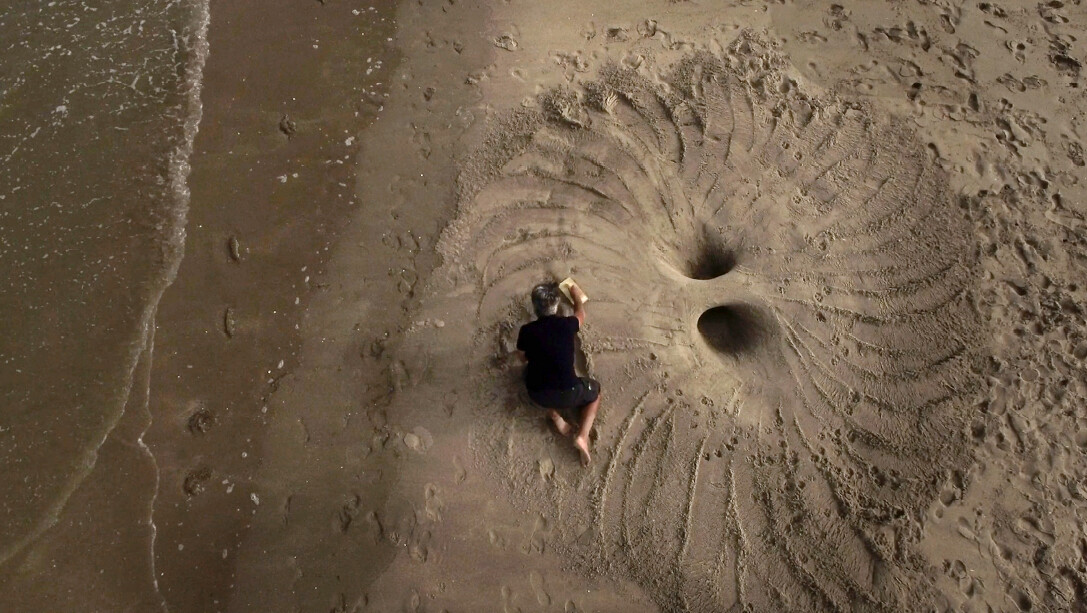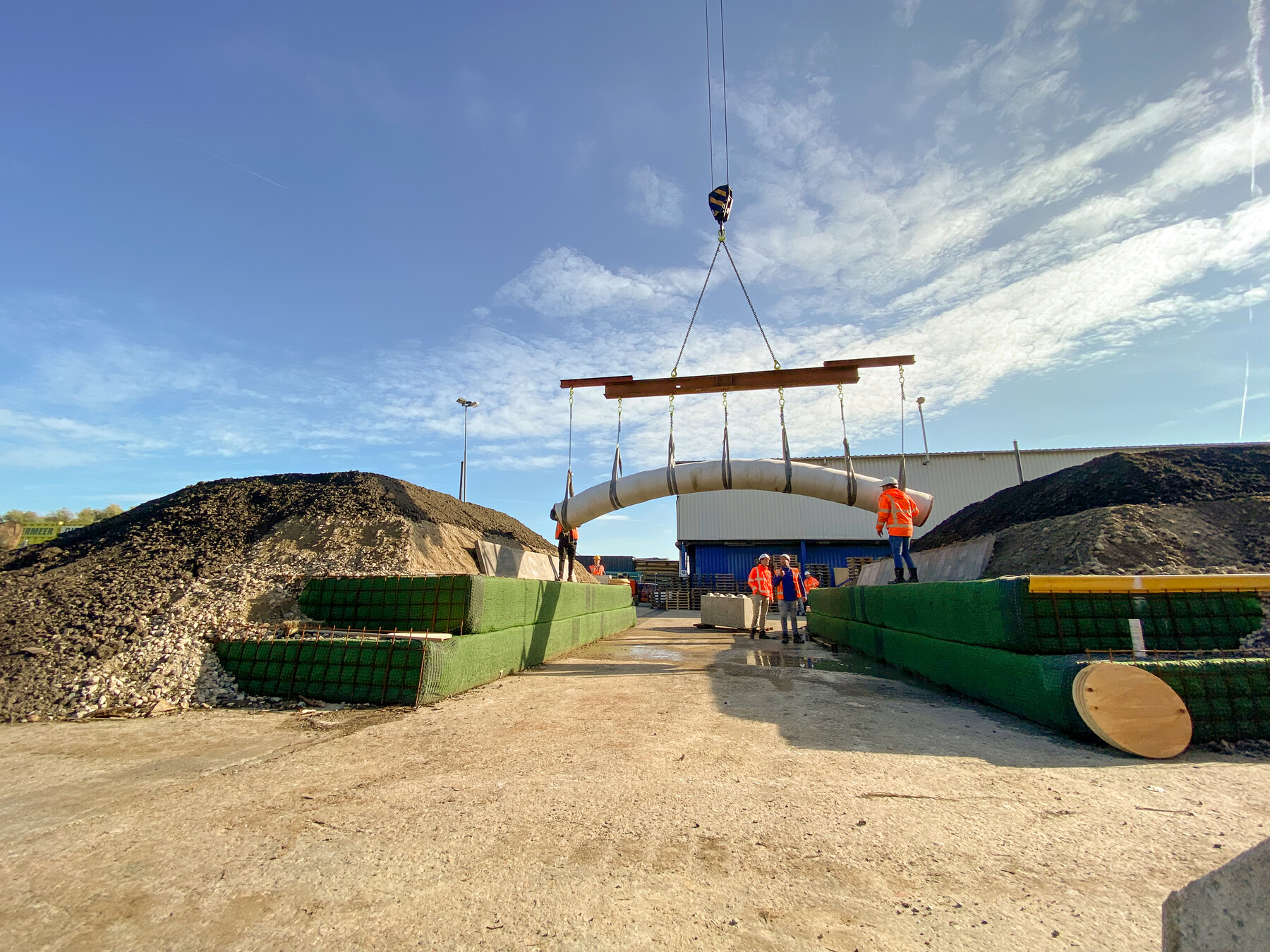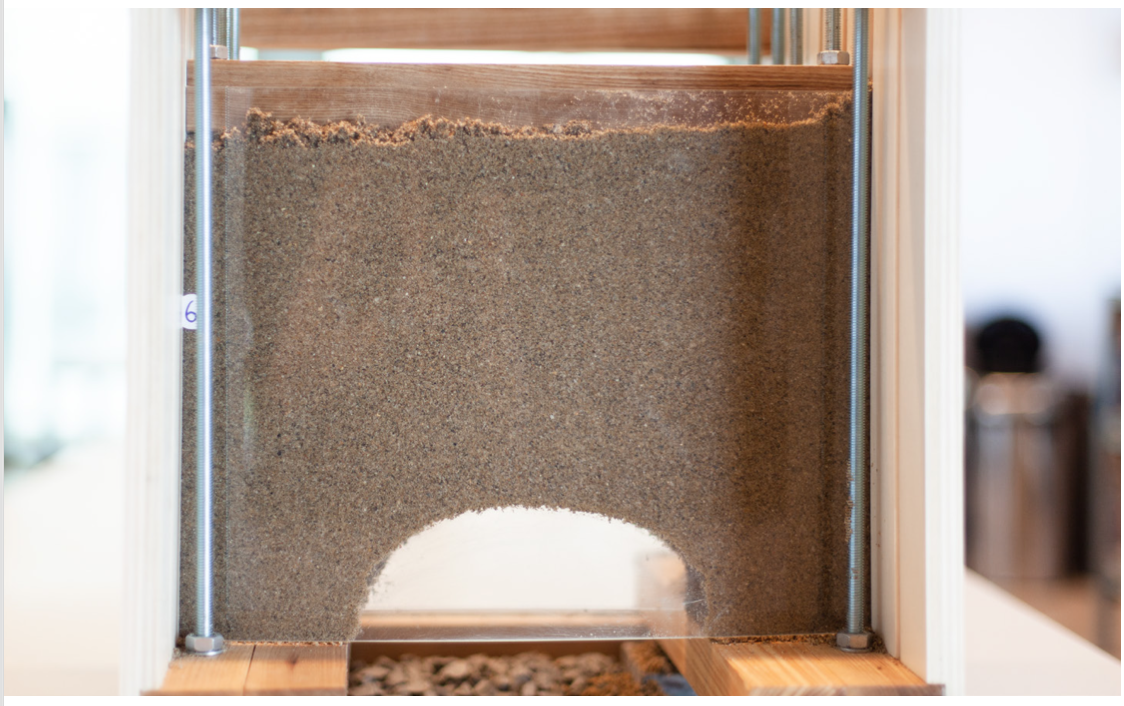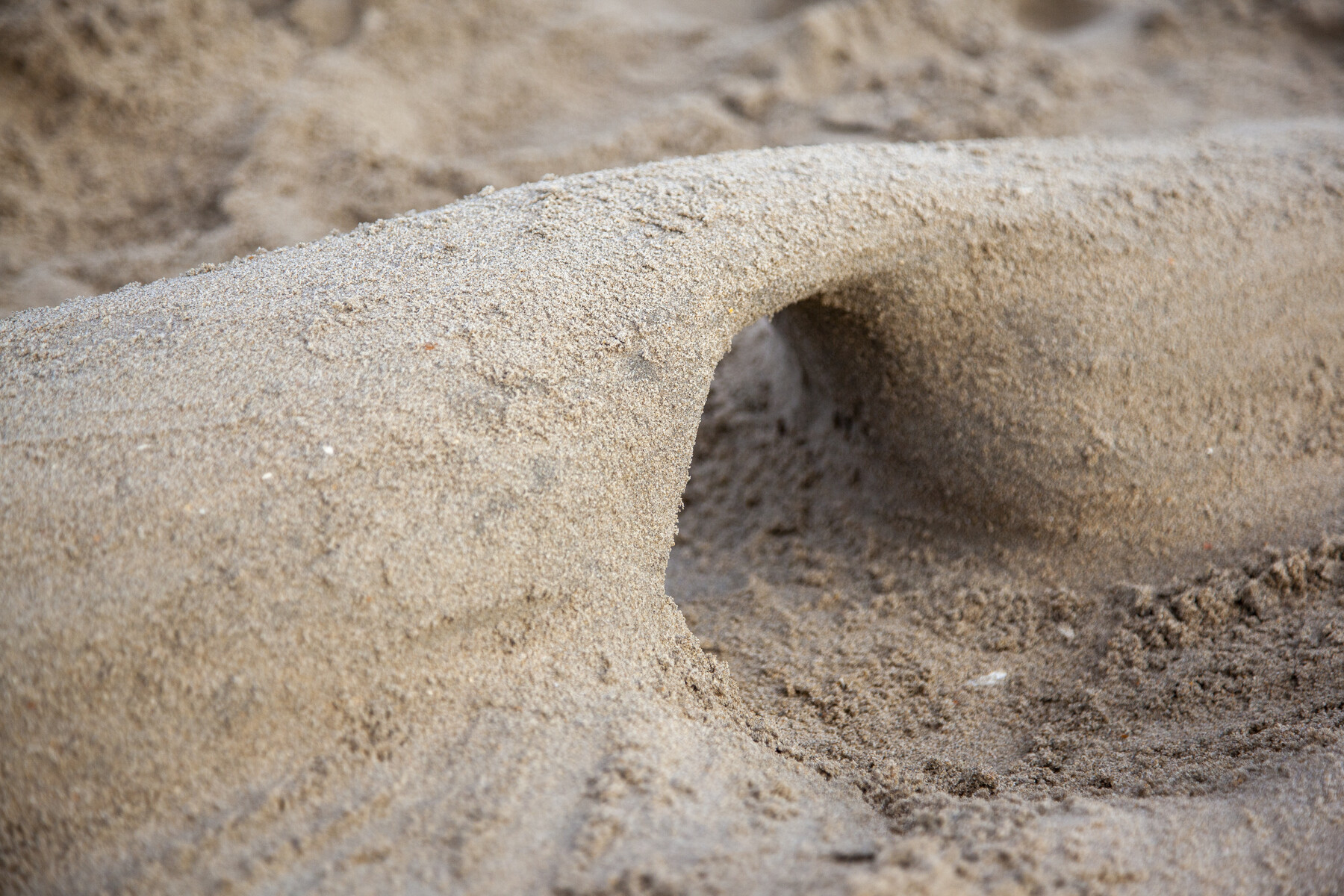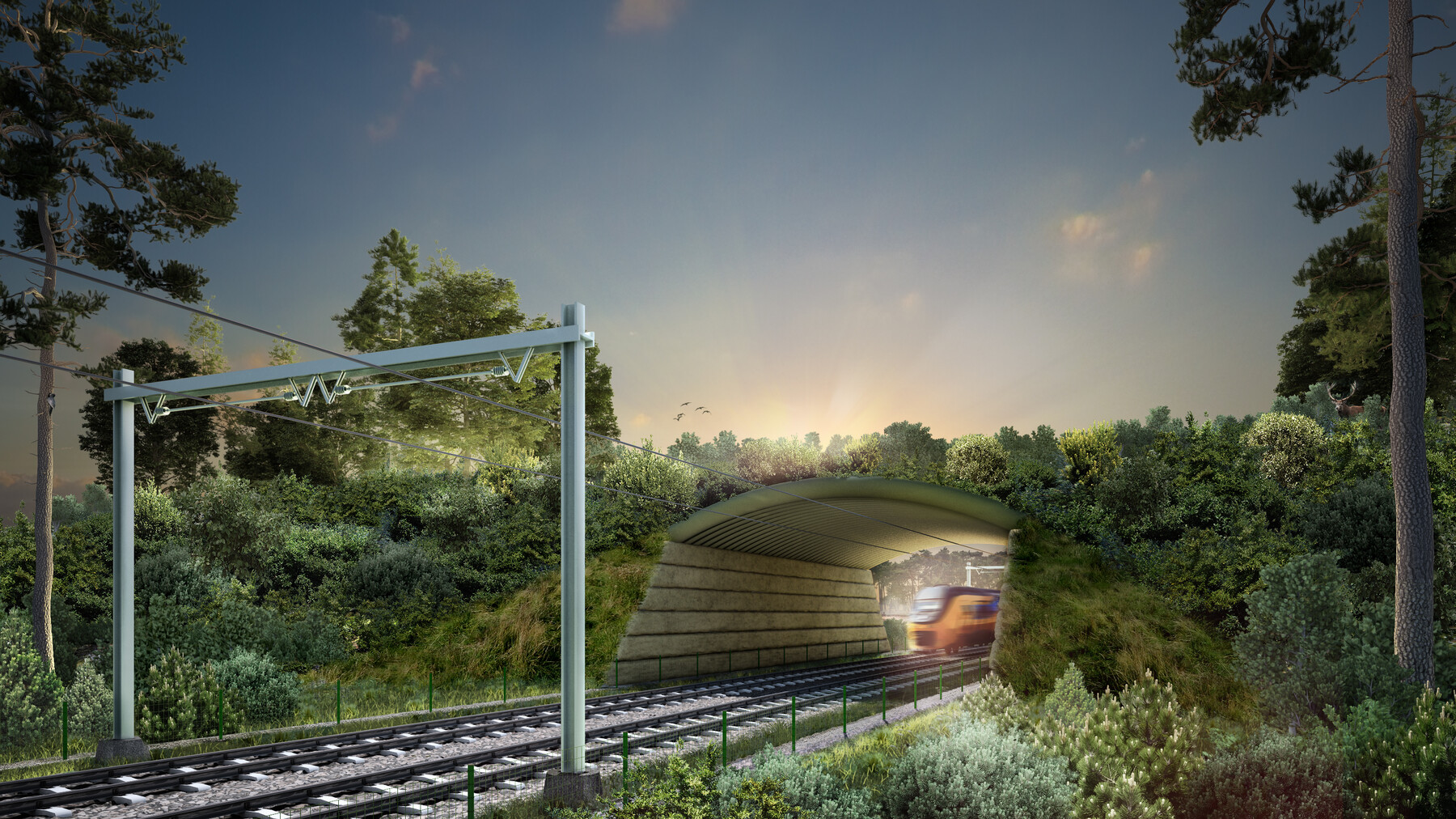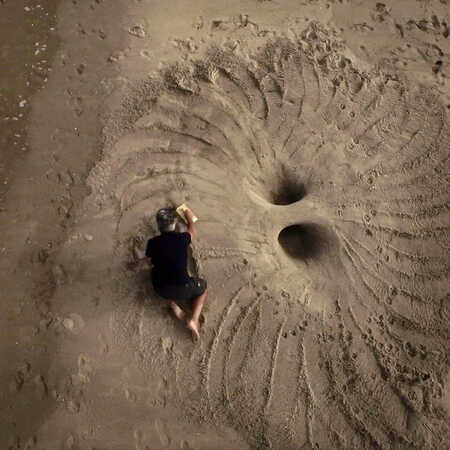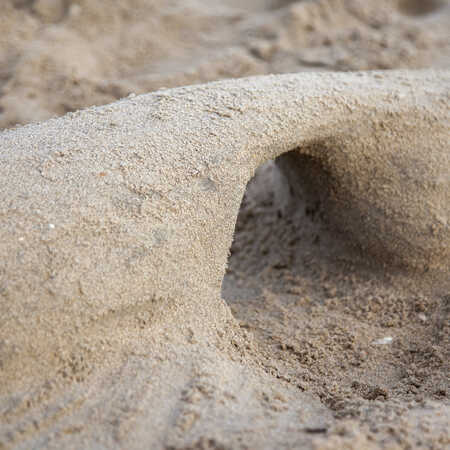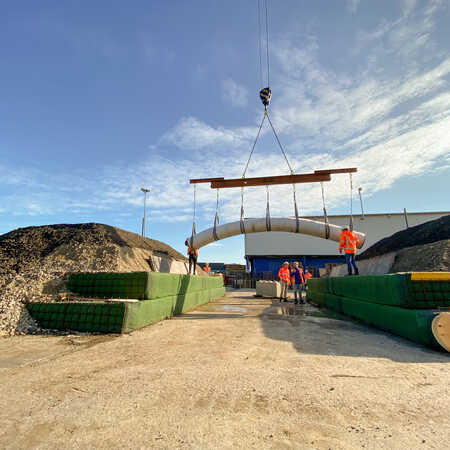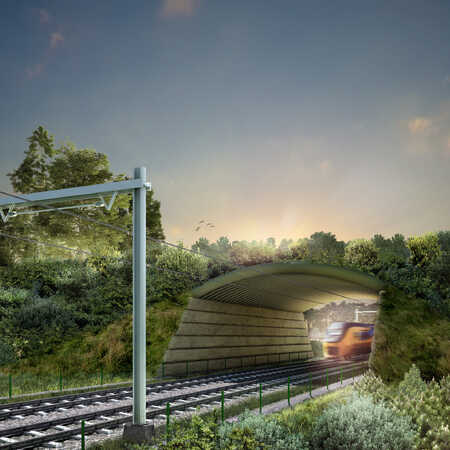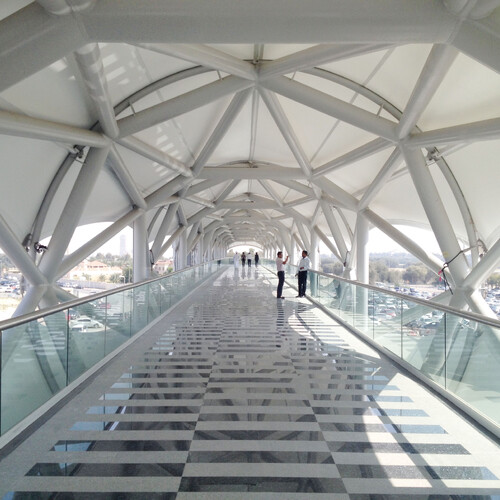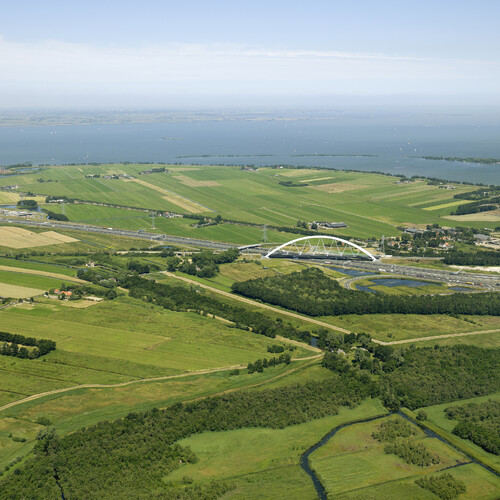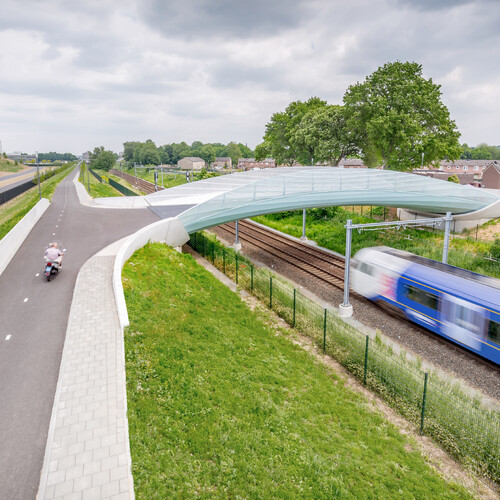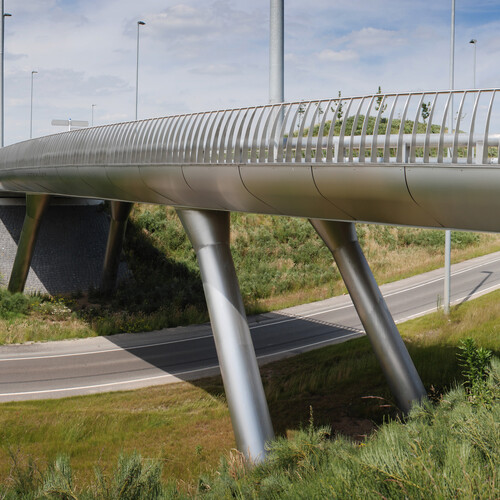Sustainable and circular viaducts
Rijkswaterstaat (Directorate-General for Public Works and Water Management) has set itself the goal of making its construction work circular by 2030, as part of its aim of reducing the CO2 emissions the entire national government produces by 49% by that year. But what does the circular future look like in practice? Answering that question requires a great deal of research and technological innovation. So Rijkswaterstaat is now stimulating the sector by means of various subsidies and competitions. As part of a consortium of large and small companies, architectural studio ZJA has responded to the call to carry out research into circular viaducts.
Along with Dura Vermeer, IV-Infra, Ploegam, GeoTec Solutions and HUESKER, ZJA took part in a venture aimed at creating a viaduct that crosses a two-lane road thirteen metres wide in a way that is truly circular. It uses no concrete or steel and is mainly composed of local sandy soils. The result is a viaduct made out of the earth itself, or a GeoDuct.
